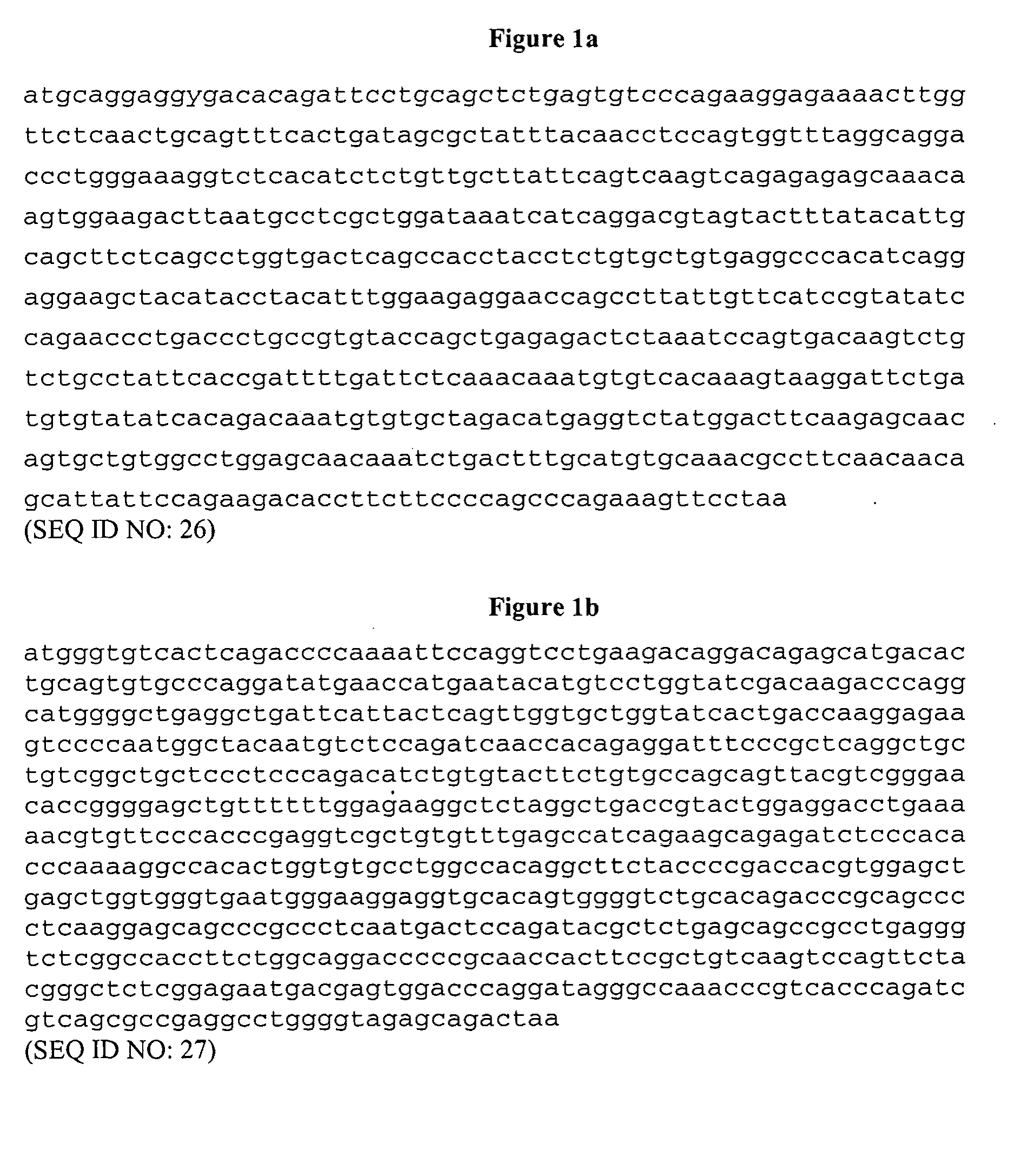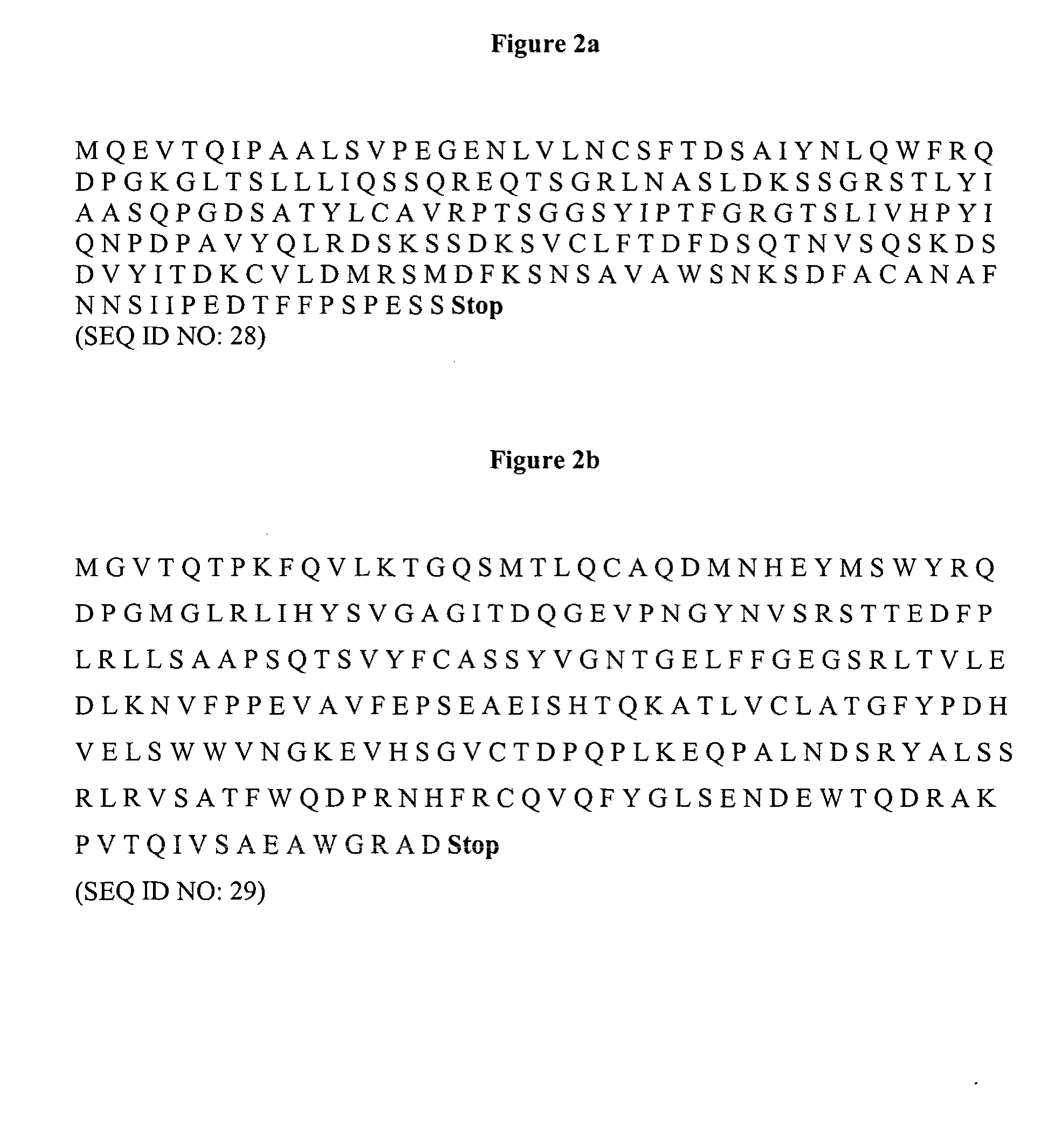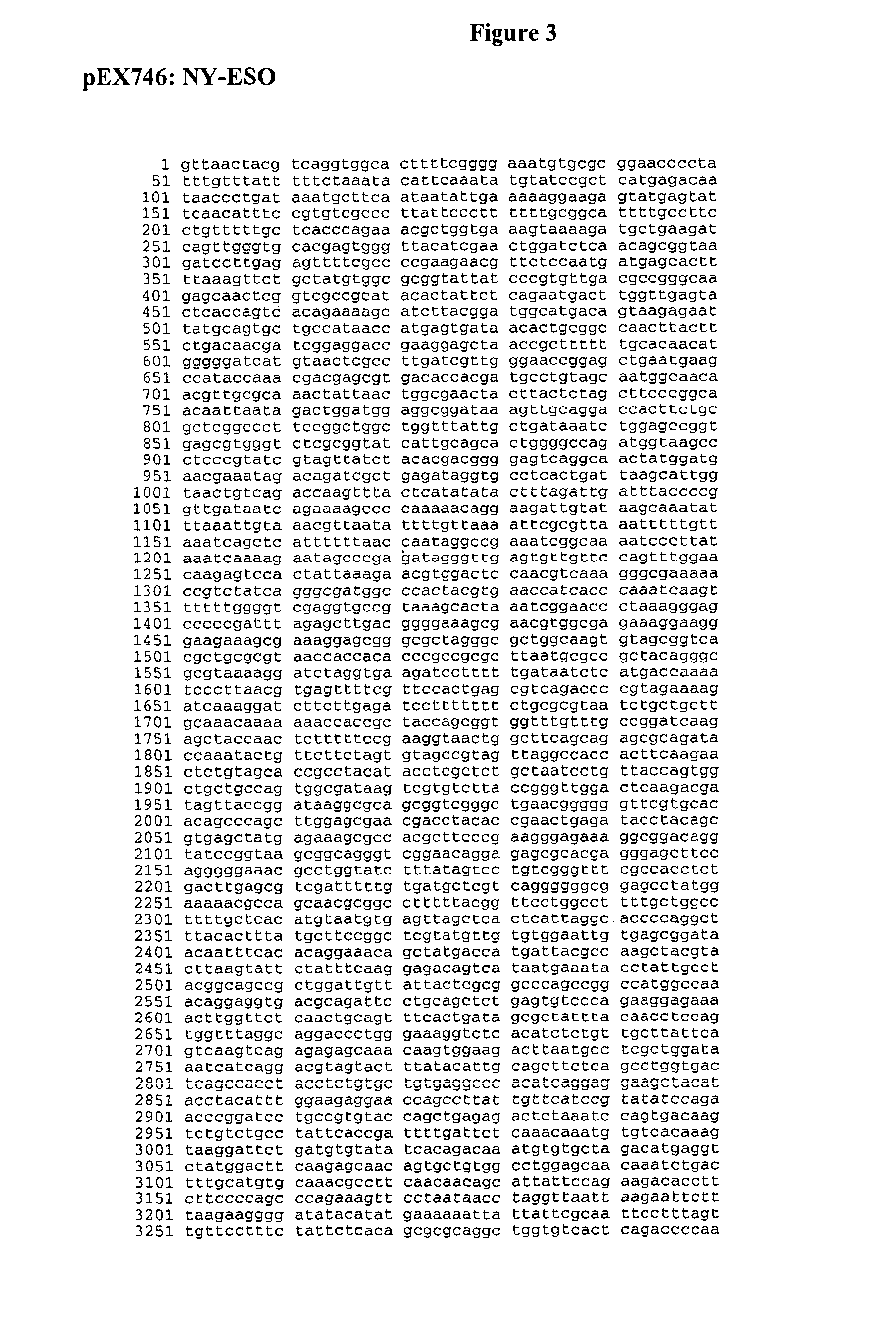Method of improving t cell receptors
a technology of t cell receptors and t cells, which is applied in the field of improving t cell receptors, can solve the problems of limiting the exploitation of tcrs in this way, and the general applicable method for the production of soluble (i.e. non-membrane bound) t cell receptors has not been availabl
- Summary
- Abstract
- Description
- Claims
- Application Information
AI Technical Summary
Problems solved by technology
Method used
Image
Examples
example 1
1G4 CDR2 Library Construction
[0121]Multiple mutations were introduced separately into the CDR2α and CDR2β sequences of the 1G4 TCR chains in order to obtain two TCR libraries containing variants that bind the SLLMWITQC (SEQ ID NO: 3)-HLA-A*0201 complex with increased affinity and / or decreased off-rate for this pMHC.
[0122]A highly diverse population of mutants was obtained for each CDR2 sequence using PCR amplification with mutagenic oligonucleotides (Jon342 & Jon344) as forward primers and downstream fully complementary oligonucleotides as reverse primers to generate a population of mutated fragments. In the case of CDR2α three of the core residues were randomised (Jon342) whereas for CDR2β, four residues were randomised (Jon344).
[0123]In order to introduce convenient restriction sites for subsequent library construction, each of the two resulting mutagenised PCR fragments are joined to an additional fragment comprising an adjacent part of the TCR open reading frame with overlapping...
example 2
Isolation of High Affinity 1G4 TCRs Comprising Mutated CDR2 Sequences
[0137]The isolation of high affinity 1G4 TCRs comprising mutated CDR2 sequences was carried out from a population of phage particles comprising a pool of the two libraries constructed as described in Example 1. The initial panning was carried as follows utilising the selection of phage particles displaying mutant 1G4 TCRs capable of binding to SLLMWITQC (SEQ ID NO:3)-HLA-A*0201 complex in solution.
[0138]Streptavidin-coated paramagnetic beads (Dynal M280) were pre-washed according to manufacturer's protocols. Phage particles, displaying mutated 1G4 TCR at a concentration of 1012 to 1013 cfu, were pre-mixed with biotinylated SLLMWITQC (SEQ ID NO:3)-HLA-A*0201 complex at concentrations of 1×10−7M for all three rounds of selection carried out. The mixture of 1G4 TCR-displaying phage particles and SLLMWITQC (SEQ ID NO:3)-HLA-A*0201 complex was incubated for one hour at room temperature with gentle rotation, and 1G4 TCR-...
example 3
Primary and Competition ELISA Analysis of the Binding of Native and Mutated Disulphide-Linked CDR2 Mutant 1G4 TCRs Displayed on Phage Particles
[0140]The following primary ELISA assay using disulfide-linked native 1G4 TCRs and 1G4 TCRs comprising mutated CDR2 sequences displayed on the phage particles was used to assess the affinity of these molecules for the SLLMWITQC (SEQ ID NO:3)-HLA-A*0201 complex.
[0141]Nunc-Immuno Maxisorp wells coated with Neutravidin were rinsed twice with PBS. 25 μL 5 μg / ml biotinylated SLLMWITQC (SEQ ID NO:3)-HLA-A*0201 complex was added to each well and these were incubated at room temperature for 30 to 60 minutes, and followed by two PBS rinses. Non-specific protein binding sites in the wells were blocked by the addition of 300 μl 3% skimmed milk in PBS followed by incubation at room temperature for 2 hours. In order to prepare phage particles displaying the mutant 1G4 TCRs produced as detailed in Example 2, the phage particles were mixed with 3% skimmed m...
PUM
| Property | Measurement | Unit |
|---|---|---|
| Affinity | aaaaa | aaaaa |
Abstract
Description
Claims
Application Information
 Login to View More
Login to View More - R&D
- Intellectual Property
- Life Sciences
- Materials
- Tech Scout
- Unparalleled Data Quality
- Higher Quality Content
- 60% Fewer Hallucinations
Browse by: Latest US Patents, China's latest patents, Technical Efficacy Thesaurus, Application Domain, Technology Topic, Popular Technical Reports.
© 2025 PatSnap. All rights reserved.Legal|Privacy policy|Modern Slavery Act Transparency Statement|Sitemap|About US| Contact US: help@patsnap.com



